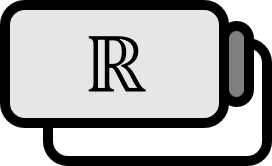Cauchy Sequence
Definition
For all $\varepsilon > 0$, if there exists $N \in \mathbb{N}$ such that $n , m \ge N \implies | x_{n} - x_{m} | < \varepsilon$ is satisfied, then the sequence $\left\{ x_{n} \right\}_{n \in \mathbb{N}}$ is said to be Cauchy.
Theorem
It is equivalent for a sequence to be Cauchy and to converge.
Explanation
Considering that there are hardly any important sequences that diverge, it can be surmised that ‘Cauchy’, who gave his name to this concept, was a remarkable scientist. Even students who have not long graduated from high school might have heard the term ‘Cauchy-Schwarz inequality’, so it wouldn’t be entirely unfamiliar. Incidentally, Cauchy’s nickname was ’the father of analysis’.
The expression $| x_{n} - x_{m} | < \varepsilon$ can be seen as an obsession with convergence. A Cauchy sequence doesn’t care where it converges to, as long as it satisfies the equation. Conversely, if the limit is determined, it makes the logical development easier.
If it’s already assumed that $\displaystyle x := \lim_{n \to \infty} x_{n}$, then convergence is guaranteed, so the issue is proving that $x$ belongs to the appropriate set. However, if that’s difficult, then it might be better to show that the Cauchy sequence $x_{n}$ converges to $x$. Since there are many well-known convergence tests and, typically, sequences like $x_{n}$ are expected to converge, this method is often easier.
